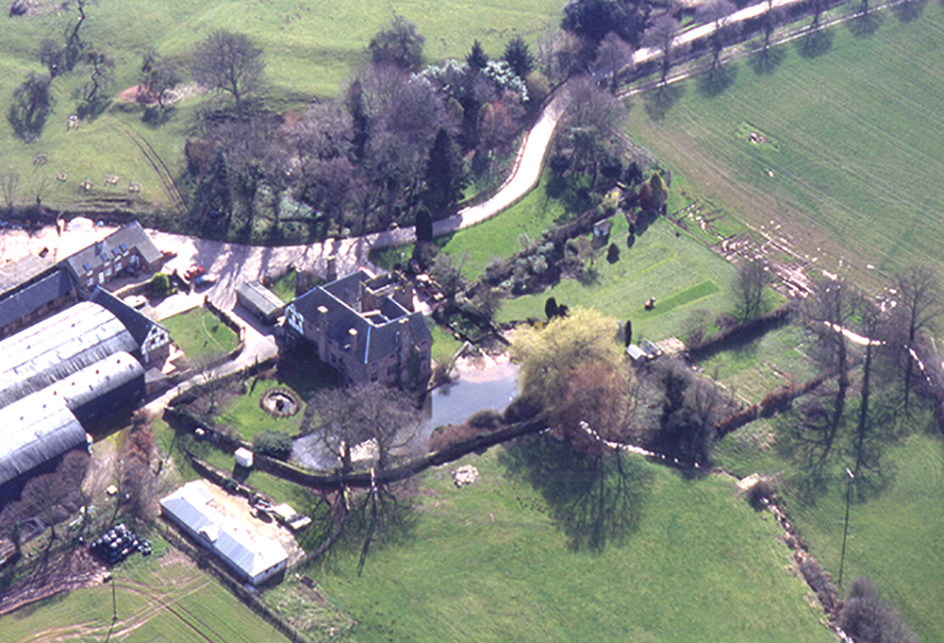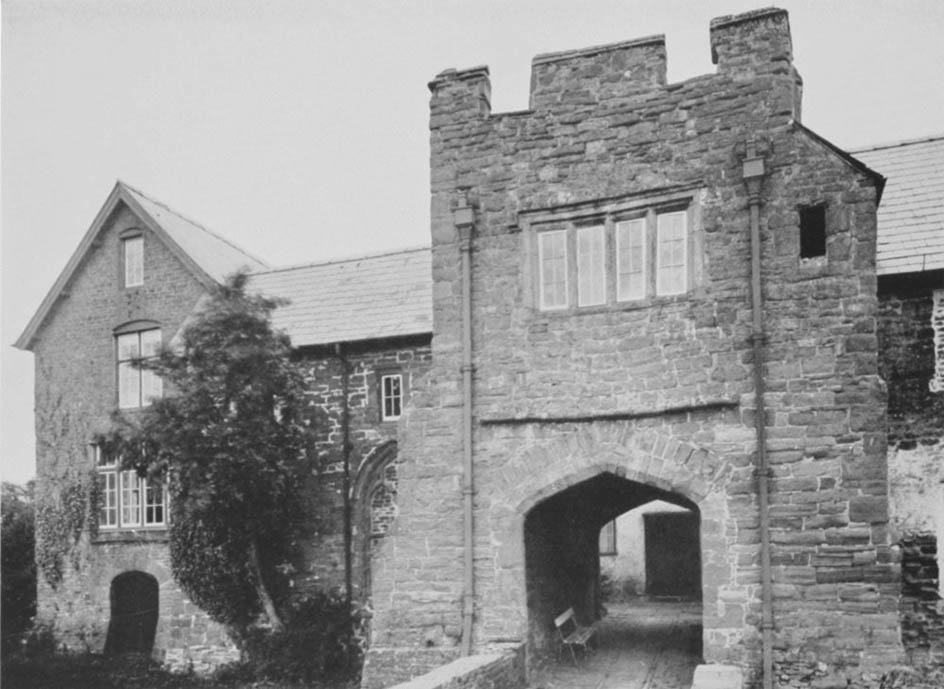
Gillow Manor
The moated manor house at Gillow was in existence in
the 13th century if not earlier, although the original structure would have been timber.
The oldest surviving parts of the present structure are the gatehouse, the adjoining building to the north-west
and some of the walls, which were built in the later 14th century. Gillow has had a colourful past.
In 1279-80 an
Inquisition Post MortemEnglish medieval record of the death, estate and heir of one of the king's tenants-in-chief, made for royal fiscal purposes.
was held after the death of Henry de Pembridge who also held
Tong Castle in Shropshire. It was found that Henry held 120 acres of land and meadow in the vill of 'Kilho/Gilloch'
which were held by the service of doing suit at [the court of] the king's hundred of
Wormelow every fortnight and providing a man for 15 days at his own cost to go with the king's army.

Gillow Manor in 1931
In the inquisition of Henry's son Fulk de Pembridge in 1296 there is a 'messuage' (house) at 'Gyllouch'. This was presumably the original manor house.
John Abrahall of Abrahall, who held lands adjacent to Gillow, and who was the most powerful man in the area of Archenfield and the Hundred of Wormelow, purchased the estate from the Pembridge heir in 1417-18. Abrahall was also a MP for Hereford city in 1419.
Abrahall had been receiver-general for the widow of Sir Gilbert Talbot, lord of Archenfield and Goodrich Castle.
On the inheritance of Sir John Talbot, Gilbert Talbot's heir, who was later to be the first Earl of Shrewsbury,
John Abrahall was dismissed from office. A bitter quarrel btween the two ensued, part personal and part political.
Each man raised a small army and these raided and pillaged widely in the area.
In 1423 the inhabitants of the Hundred of Wormelow petitioned the King's Parliament for help,
citing 'the many extortions,
oppressions, murders, homicides, abductions, the forcible oustering from their lands and
tenements of men with their wives and children, the taking of fines and the taking of all their goods and chattles'.
The petition lists the names of 50 other men in Sir John Talbot's company, and 27 men and a woman in
John Abrahall's. In other documents John Abrahall was recorded as acting 'along with other Welsh evildoers to the
number of sixty 'all in warlike array' on one foray, and with 80 in another.
Stolen cattle and horses were driven to Gillow and prisoners were kept there until they paid ransom.
Parliament appears to have done nothing beyond expressing the pious hope:
'And may the act [of telling everyone to keep the peace] and the enrollment of this petition
accomplish what is
desired.'